The upper side of a GEM electrode can be coated with a photosensitive material; with proper voltages applied, a photoelectron extracted from the photocathode is sucked into the holes, and multiplies in avalanche. A cascade of GEM foils ca be used to obtain large gains and allow deetction and localization of single photoelectrons:
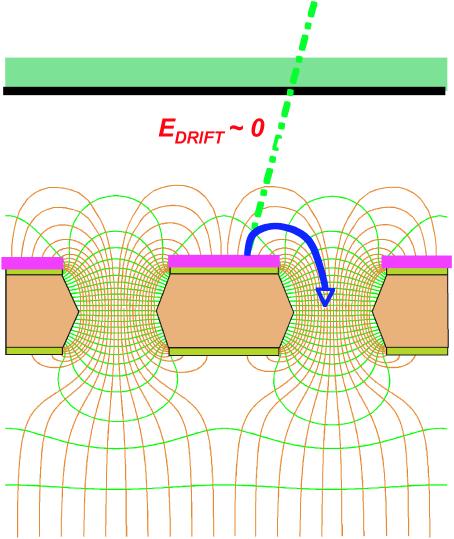 |
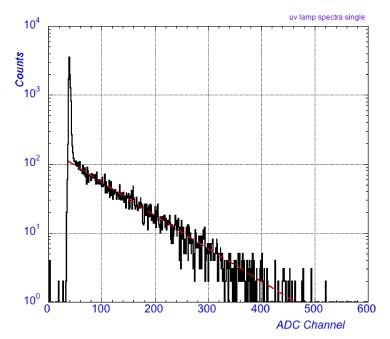 |
| Photon detection with GEM: a photosensitive material is deposited on the upper side of the foil. | Single photoelectron deetcted charge spectrum; triple-GEM with CsI photocathode |
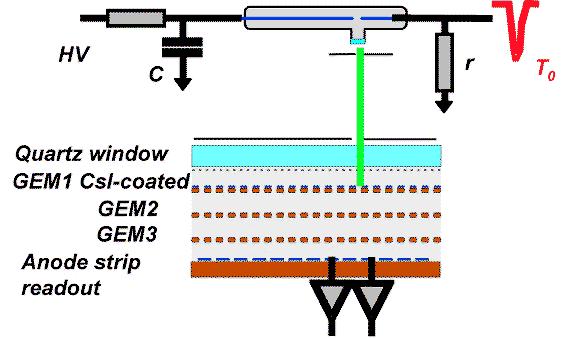 |
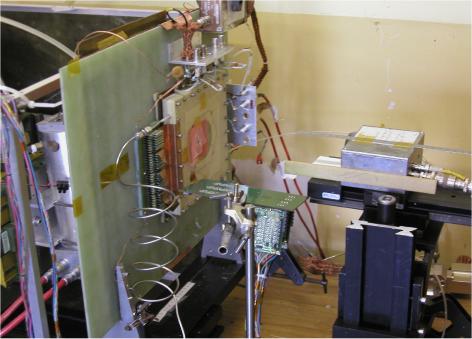 |
| Schematics of the detection setup, using a pulsed UV lamp. | The laboratory setup with a small size GEM detector. |
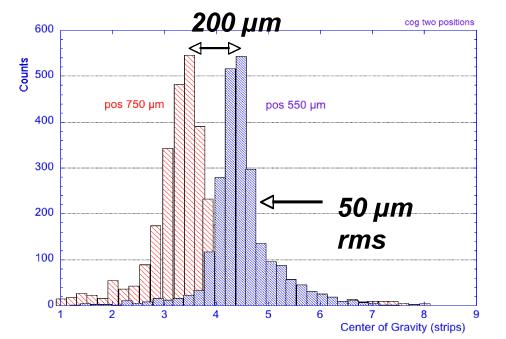 |
Center of gravity of recorded charge on anode strips for two positions of collimated beams 200 µm apart. The single photoelectron localization accuracy is ~50 µm rms. |
For multihit events, such as those in RICH applications, a powerful yet simple readout scheme is the Hexaboard, a matrix of hexagonal pads interconnected in rows along three directions at 120O:
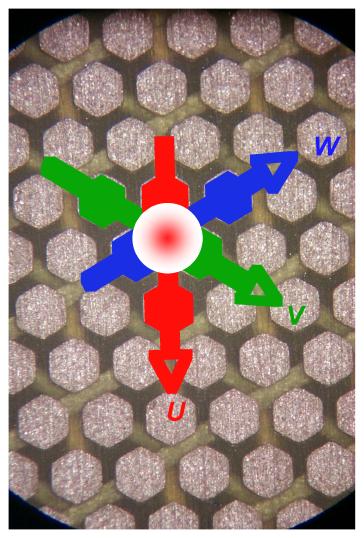 |
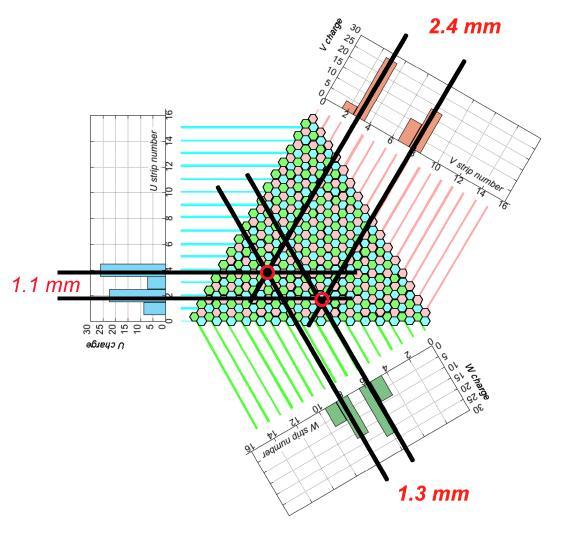 |
| Hexaboard: hexagonal pads, 500 µm in diameter, interconnected along three directions. | A double photon event recorded with the Hexaboard readout. The two-photon resolution is around one mm. |
To know more: see T. Meinschad, L. Ropelewski and F. Sauli, Nucl. Instr. and Meth. A535(2004)324 PREPRINT
